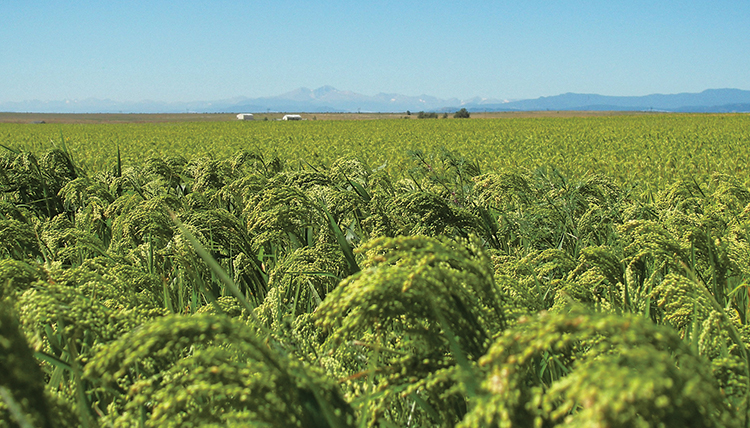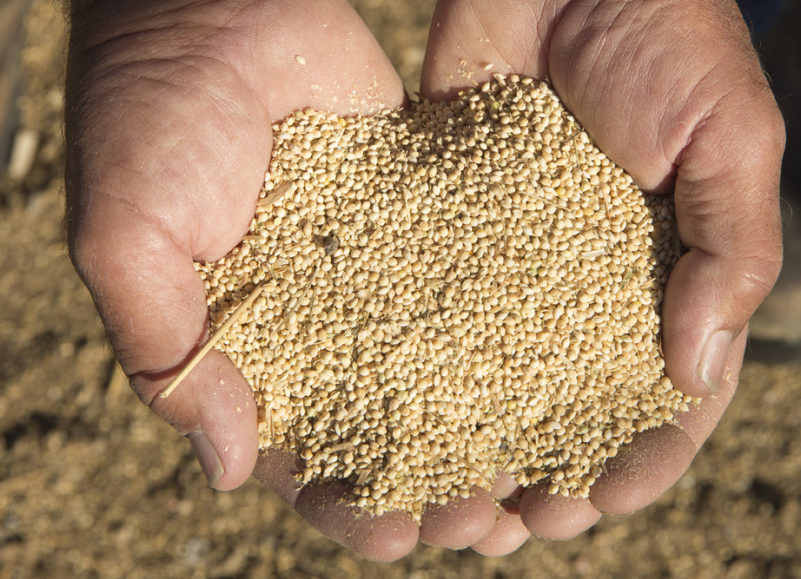Home > Colorado > Colorado Crops & Livestock > Colorado’s Millet Industry is on the Rise
Colorado’s Millet Industry is on the Rise
In partnership with: Colorado Department of Agriculture

When you think of Colorado agriculture, you may picture herds of beef cattle, fields of wheat and perhaps even peaches. But what about millet?
Currently, millet is used mostly for birdseed and other pet foods, though it can also be used to make flour for human consumption. It is high in protein and gluten free.
Often overlooked in other states, this tiny seed makes a big impact for Colorado.The state is the No. 1 producer of millet in the country, growing about 6.4 million bushels annually, and earning about $23 million from the crop.
Chris Stum has been farming full time with his brother-in-law for about 12 years, and his family’s farm has always grown millet.
“The bigger family farm has about 7,000 acres and with our current rotation, roughly a third of that is millet,” Stum says. “We raise proso millet for the grain market.”

Stum explains that millet is often used as a rotation crop with wheat, corn and other row crops. Colorado’s climate is ideal for millet, because the cereal grain does very well with little water.
“People tended to plant millet when their wheat crop failed, but then they started liking it and planting it into the rotation since it does very well on little water. It’s a staple crop in northern Colorado,” Stum says.
As former executive director of the Colorado Wheat Administrative Committee, Darrell Hanavan says wheat and millet go hand in hand.
“During that time, a lot of the wheat producers were also millet producers, and they always wanted to establish a millet marketing order,” he says. “When I retired, I volunteered to help establish that and formed the High Plains Millet Association (HPMA).”
Hanavan and Stum are both involved in the HPMA – Hanavan as a consultant and Stum as president. HPMA’s goal is to provide sustainability to Colorado’s millet industry through production research and marketing, and to expand both domestic and international markets for the crop.
HPMA is working with both the Colorado Department of Agriculture and Colorado State University to reach this goal. The Colorado Department of Agriculture promotes millet as an export crop, usually to Europe, and helps make connections between millet producers and buyers. CSU conducts research and provides advice to farmers on best farming practices and weed and insect control.
“Research focuses on developing new end-use products and new millet varieties with improved quality with agronomic traits,” Hanavan says. “We also want to focus on education to millet producers, as well as to consumers.”
Colorado currently has four flour mills producing millet flour, as well as Rollingreens Millet Tots, which are similar to tater tots.
“I really hope we can expand the market and make millet a more diverse and better-known crop,” Stum says. “I think we need to keep educating people on the uses of millet and then it can really take off.”
Learn more about Colorado’s millet industry at sites.google.com/view/hpma/consumers.




I planted 8,000 trees on 36 acres on previously farmed land that I acquired in 1997. My forester, Randy, told me that at 15 years I should cut down half the trees in every other row to promote growth of the remaining trees. But I have had a difficult time hiring someone to do this, and would also like to know the best way to do the harvesting of every other row of trees with minimal damage to the remaining trees. My forester died after the planting was done.
[…] image source […]